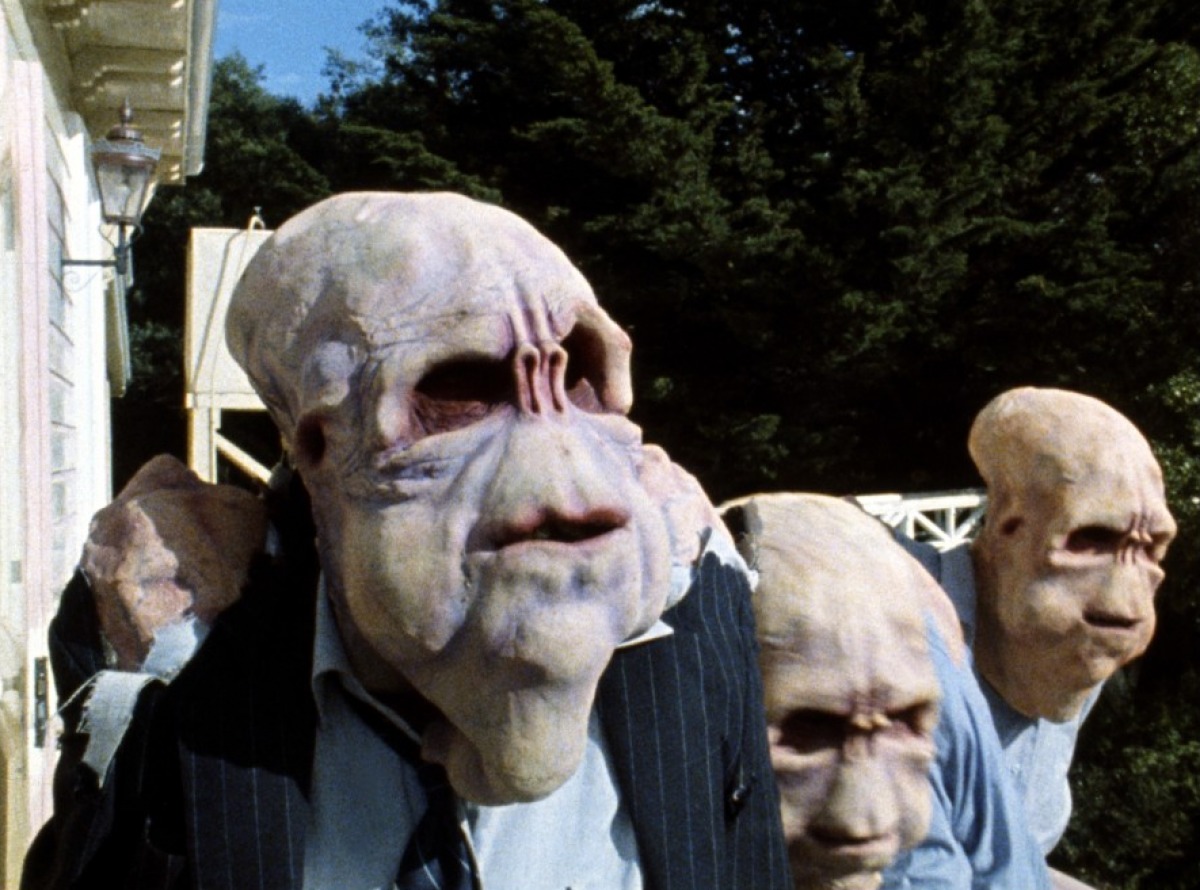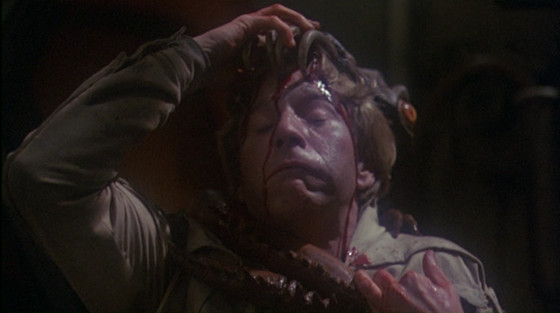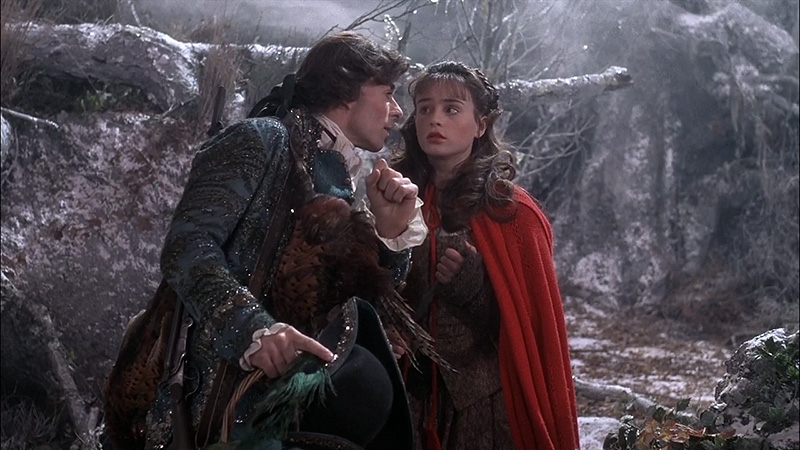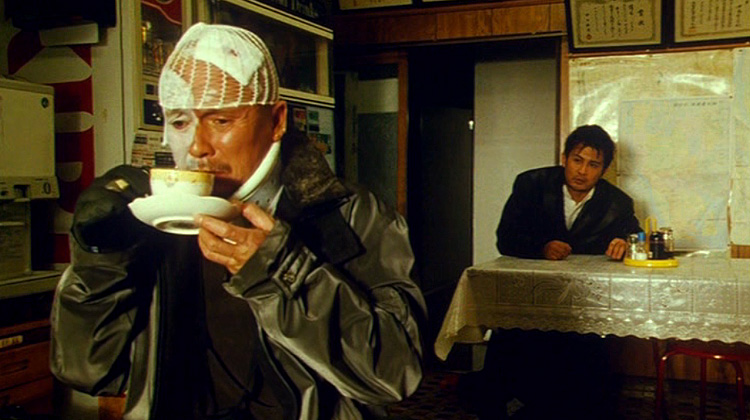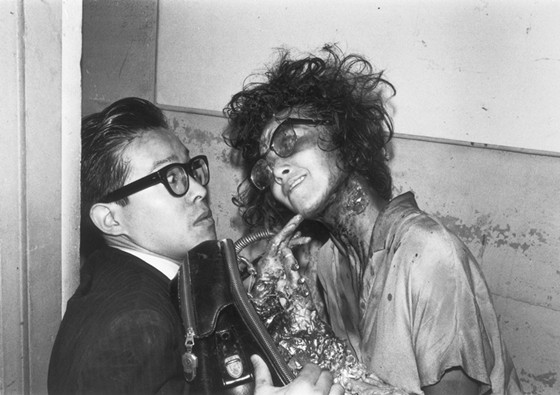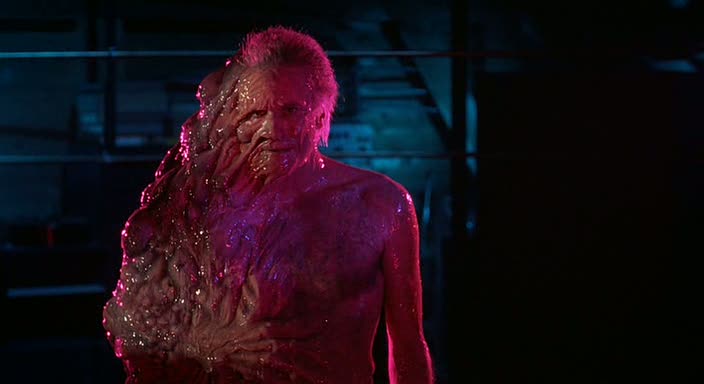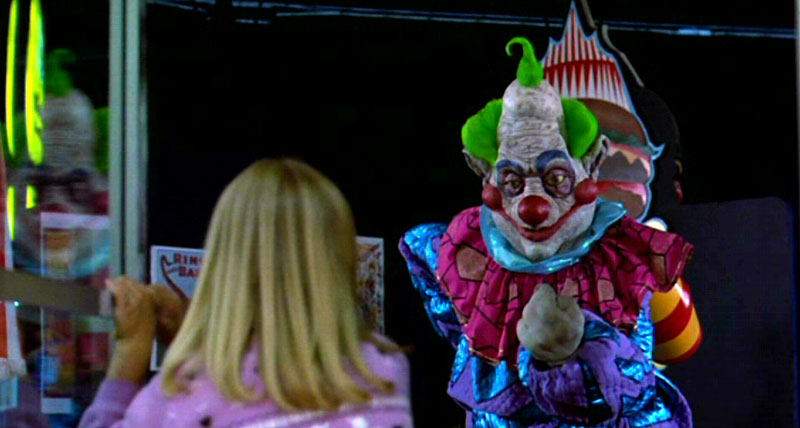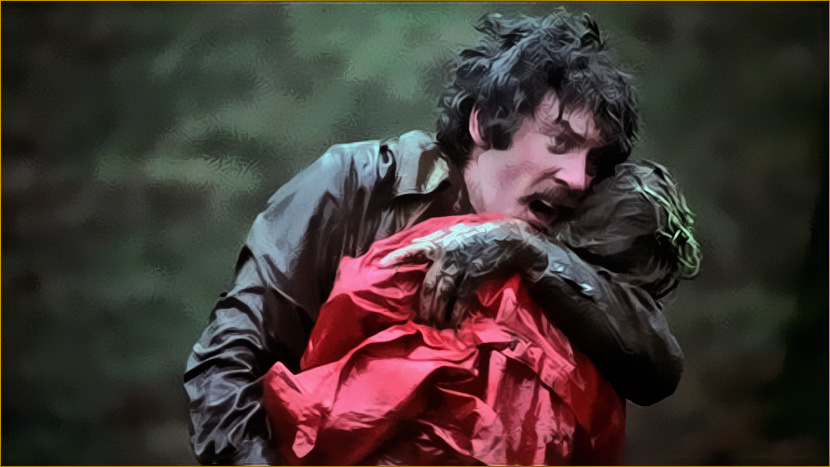18. Bad Taste (1987)
Before becoming synonymous with mega budget Tolkien adaptations, Peter Jackson was best known for a slew of zero budget films that pushed the limits of good taste, the apotheosis of which is his feature debut Bad Taste.
The title literally spelling out the film’s intent, Bad Taste is Jackson indulging in his love for controversy baiting gross out humour and squelchy splatstick gore. Jackson’s film may disgust and confound some viewers with its amateur approach and proclivity for outrageous bloody excess, but it could never be accused of being dull.
Indeed, despite its inherent technical and professional limitations, Jackson’s film is never short of inventive ideas when it comes to absurd humour or icky viscera. The decision to build the bad taste comedy around a rag tag team of alien killers waging war against human consuming extraterrestrials allows for some inspired set pieces.
These include; cardboard cut-outs of The Beetles looking on in bewilderment as an alien is run over, a wayward missile blowing up a sheep, and one of ‘the boys’ slicing straight through an alien from top to bottom, exclaiming that he’s “born again!” when he emerges in a fountain of blood and guts.
19. Galaxy of Terror (1981)
Ostensibly an Alien rip-off with its tale of a spaceship crew sent to investigate an unknown alien structure, Galaxy of Terror is now considered a bona fide cult classic in its own right. As one would expect from a Roger Corman production, exploitation is at the forefront of this wild sci-fi horror ride. It features excessive violence, over-the-top acting and, most notoriously of all, a scene where a woman appears to be raped by a huge slimy worm.
What Galaxy of Terror is most notable for is its cast which features a number of cult icons, including Robert Englund (A Nightmare on Elm Street), Sid Haig (The Devil’s Rejects) and Grace Zabriskie (Twin Peaks). While all the cast suitably ham it up, Zabriskie’s kooky turn as the ship’s mentally unhinged captain is a real highlight. The survivor of a space disaster, Zabriskie’s captain perfectly embodies the B-Movie spirit with her crazed countenance and frequent glances into the middle-distance.
The film also boasts an exceedingly strange atmosphere where genuinely tense suspense sequences and effective scares are offset by an inexplicable, often hilarious, strangeness.
For instance; why does the Master have a glowing red head, why is Sid Haig’s character obsessed with crystals and only seems to communicate via fist bumps, and what is the real purpose of the mission? To find a replacement for the Master? And if so, then why? This unexplainable oddness only adds to the film’s charming cult character, making for a delightfully weird B-Movie curio.
20. The Company of Wolves (1984)
Equal parts poetic, magical and disturbing, The Company of Wolves explores the relationship between children’s fairy stories and the adult world of sex and violence that children are constantly, unstoppably hurtling towards. Almost every image in the film is metaphorical, a seemingly innocent child’s fantasy evoking the simultaneously terrifying and alluring realities of adulthood.
The physical metamorphosis from man into wolf suggests the transition of boy into puberty, while the lycanthropic lunar cycle is symbolic of girl’s own cycle of burgeoning sexuality. With its foregrounding of the metaphorical, the film is home to some astoundingly strange imagery.
A severed wolf head falls into a jug of milk and becomes human again, an aristocratic banquet turns into a party for wolves, a small human figure emerges from a bird’s egg, granny’s head smashes into porcelain pieces, and a wolf’s snout protrudes from a man’s mouth. However, one of the most unsettlingly surreal images is also one of the most subtle and banal.
The image in question is that of the Devil, a suave man in a sharp suit holding a skull, appearing in the middle of a medieval forest in a Rolls-Royce. Succinctly encapsulating the eerie tone of the film, this image stands as one of the most unnervingly offbeat outside of surrealist cinema proper.
21. Gozu (2003)
Takashi Miike is well known for pushing cinematic boundaries, with films like Audition and Ichi the Killer espousing a taste for the extreme and unconventional. This has led to Miike becoming one of the most revered yet controversial figures in contemporary Japanese cinema.
Gozu is a film that appears to self-consciously capitalise on Miike’s reputation, taking his gonzo approach to its (il)logical conclusion. Combining Yakuza crime drama, noir mystery, abstract horror and absurd black comedy, Gozu is Miike’s ultimate statement of intent. In Gozu everything is heightened, everything is taken to extremes; sex, violence and crass humour exaggerated to such a degree they lapse into cartoon ridiculousness.
This over-the-top approach is then taken a step further as the conventional narrative cinema rulebook is ripped to pieces. The film wholeheartedly embraces surrealism as Miike leads the viewer into the Japanese equivalent of Twin Peaks, a world densely populated with strange characters and even stranger imagery. There is the Yakuza who thinks dogs and cars have been trained to attack him, the innkeeper who produces milk for guests from her own breasts, and the man with a cow’s head.
There’s also gender-swapping, ladle stimulation, nightmare visions, and a scene where a woman gives birth to a full grown man. The film may become less clear as it goes along but Miike’s intention is plain to see. Throwing everything he’s got at the screen, Gozu shows just how far Miike is willing to take his own brand of cinematic lunacy.
22. Tetsuo: The Iron Man (1989)
Stark black and white aesthetics, an off-beat atmosphere, disturbing imagery, and an electro-industrial soundtrack. It is easy to see why Tetsuo: The Iron Man has been described as Eraserhead’s Japanese counterpart. While it is true that there are a number of striking similarities, to simply celebrate the film as a Japanese Eraserhead is to discredit its unique flair and originality.
If Lynch’s film is an industrial nightmare, Tetsuo is a crazed live action body horror anime. Featuring frenetic camerawork and creepy unnatural stop motion tied together in a tale of metal fetishism and extreme splatter, Tetsuo is so far removed from notions of conventional filmmaking that it challenges the very concept of narrative cinema. Director Shinya Tsukamoto posits that story, character development and logic are superfluous and wholly expendable.
Tetsuo is a working thesis on film as a visceral experience, a veritable viewing assault which refuses to let viewers sit back and relax. The film attacks with its deafening industrial soundtrack, its confrontational subject matter, its disorienting camerawork, and its refusal to offer even the merest hint of comforting cinematic norms. It is also notable for being one of the leading purveyors of the cyberpunk movement with its elaborate iron man makeup celebrating the melding of flesh and metal.
23. From Beyond (1986)
Marking the return of the Re-Animator dream team of director Stuart Gordon, producer Brian Yuzna, and stars Barbara Crampton and Jeffrey Combs, From Beyond offers up another hysterically gooey exploitation take on Lovecraftian lunacy.
Proving that Re-Animator was no one hit wonder, the over-the-top hysteria of Lovecraft’s more outrageous tales is perfectly encapsulated in the trappings of an effects-heavy ‘80s B-Movie. Indeed, the creature effects – among the best the ‘80s have to offer – are perhaps the closest anyone has come to bringing Lovecraft’s indescribable forms to life.
The film is packed full of otherworldly creatures that look like they’ve come straight from another dimension. There are huge slimy creatures with toothy maws, vicious flying eels, distending pineal glands, and the repulsive Dr. Edward Pretorious, a viscous slab of shape shifting gloop. A
lso like all good Lovecraft tales, From Beyond explores how seeing these creatures from another world can drive a sane man to insanity. Of course, this being the ‘80s, the characters don’t just succumb to something as quaint as simple madness, their transformation is suitably exaggerated, in keeping with the film’s exploitation leanings.
Combs mutates into a bald, brain-eating zombie with a squirming pineal gland protruding from his forehead while Crampton turns from professional doctor to crazed sex maniac and, at the film’s close, a screaming, gibbering wreck. Add to this a suitably otherworldly psychedelic purple and pink lighting scheme and genre favourite Ken Foree, and you have the recipe for a wild ride into Lovecraft’s beyond.
24. Killer Klowns from Outer Space (1988)
The title says it all really. It’s a big camp, daft B-Movie and it knows it, delighting in its absurdist concept with an obvious affection for its crazy subject matter. Special effects maestros turned filmmakers the Chiodo Brothers’ Killer Klowns from Outer Space is, as you would expect, an over-the-top exercise in B-Movie kitsch, pondering what would happen if a race of aliens resembling circus clowns came to earth to harvest the human race by turning them into cotton candy cocoons.
Luckily, the film doesn’t take itself seriously – well, how could it with such a ridiculous premise? Right down to the funny sideshow score, it is clear that Killer Klowns from Outer Space is a pastiche of epic proportions; the Klown’s invasion of small town America allowing for a series of increasingly bizarre encounters between the members of the local community and those of the alien clown fraternity.
You can almost hear the Chiodo Brothers giggling just off-screen as they stage such ludicrous scenes as a Klown knocking a biker’s block off, a cop being used as a human ventriloquist dummy, and a security guard killed by custard pies.
25. Don’t Look Now (1973)
Nothing is what it seems. Donald Sutherland’s character nicely sums up Don’t Look Now with this seemingly innocuous yet highly significant line of dialogue. Coming on like a cross between European arthouse, classic English ghost story, and proto Italian giallo, the film simultaneously challenges and mesmerises with its experimental cinematic bravado.
Picking up from the disjointed duality and psychedelic styling of the ultra hip Mick Jagger vehicle Performance, Don’t Look Now is director Nicolas Roeg plying his trade at something much more substantial, mature and emotionally involving. The arty style and flair are still there but Performance’s detached cool has been replaced by an intimate, compelling drama.
A rare instance of style fully supporting substance, here Roeg’s unconventional approach goes hand in hand with the film’s mysterious nature and unnerving atmosphere. Elliptical editing, a nonlinear narrative, jump cuts and symbolic imagery all work to unsettle the viewer, heightening their sense of dread.
Roeg’s masterstroke is that the jarring effect of his more eccentric filmmaking techniques is counteracted by the undeniable beauty with which they compliment the on-screen drama. Don’t Look Now is certainly strange and stylish but it definitely isn’t devoid of feeling, making it a genuinely affecting weird horror film.
Author Bio: Oliver Innocent is an aspiring film critic/academic with a BA Honours degree in Screen Studies from Sheffield Hallam University. His real passion is horror cinema, loving all that the genre has to offer, from the subtle chills of prestigious terror like The Shining to the garish absurdity of 1980s slasher trash such as Slumber Party Massacre II. He hopes to one day transform his passion into a career.
